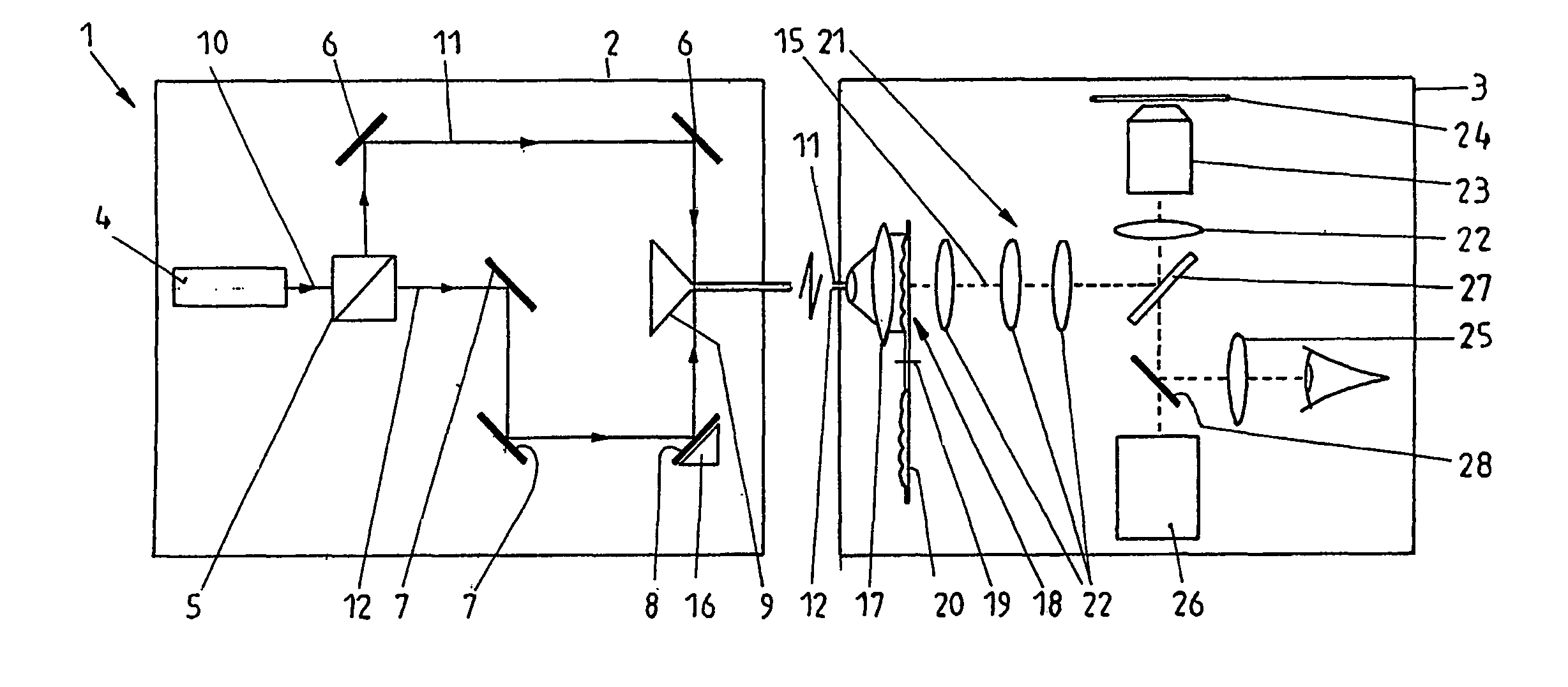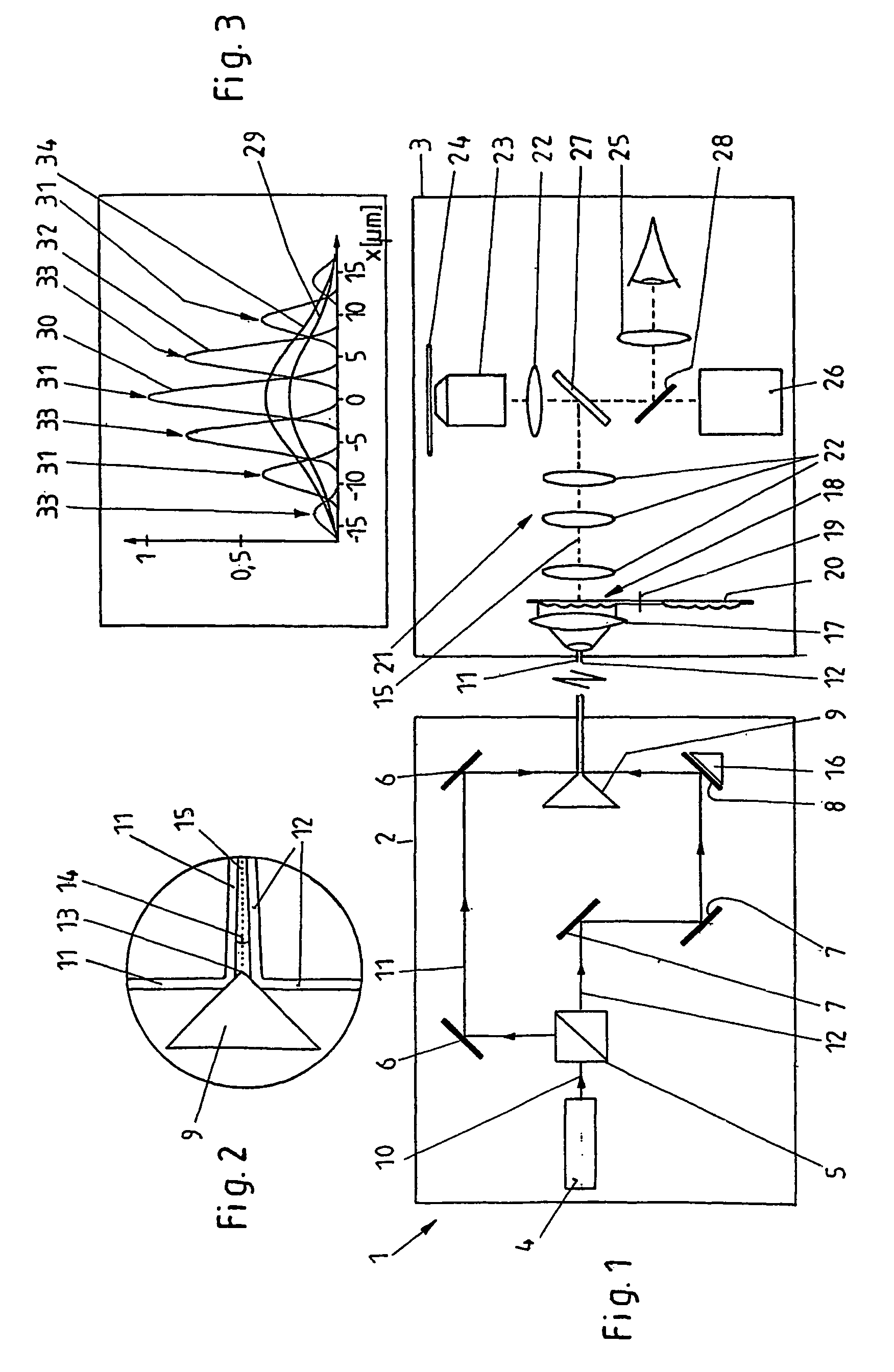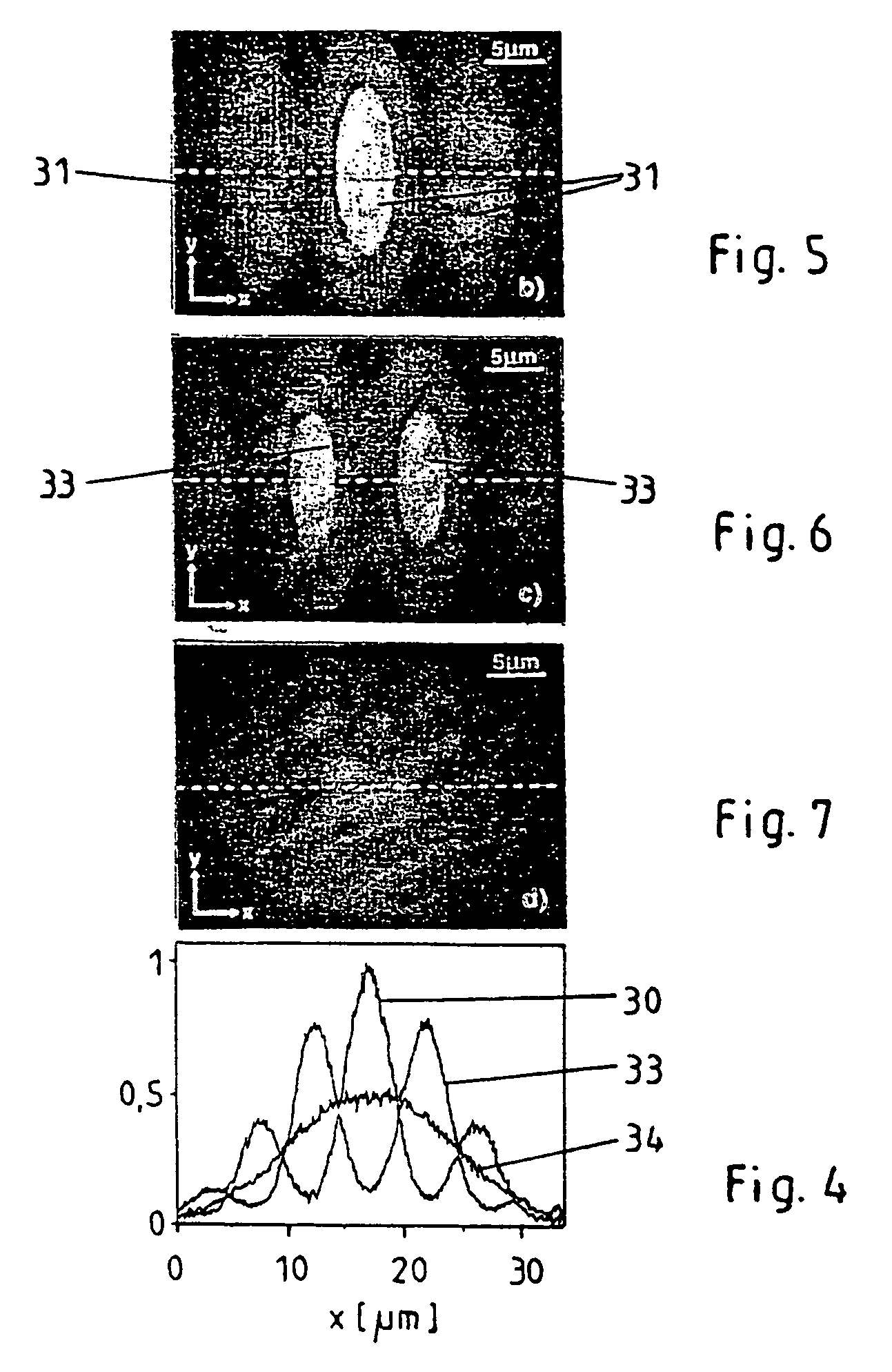Method and device for multi photon excitation of a sample
- Summary
- Abstract
- Description
- Claims
- Application Information
AI Technical Summary
Benefits of technology
Problems solved by technology
Method used
Image
Examples
Embodiment Construction
[0035]Referring now in greater detail to the drawings, the device 1 shown in FIG. 1 consists of two partial arrangements 2 and 3, the areas of which are each enclosed by a line in the present drawing. This does, however, not mean that the partial arrangements 2 and 3 have to be placed in different housings, or that there has to be another spatial or physical separation. The subdivision of the device 1 into the partial arrangements 2 and 3 only relates to their function.
[0036]The partial arrangements 2 of the device 1 includes a laser 4, a beam splitter 5, deviation mirrors 6, 7 and 8, and a roof mirror 9. The laser 4 emits a coherent laser beam 10. The beam splitter 5 splits the laser beam 10 into two partial beams 11 and 12 which are coherent with regard to each other and which each have a same intensity distribution about their beam axes. The partial beams 11 und 12 are deviated by means of the deviation mirrors 6 to 8, and they are directed towards the roof ridge 13 of the roof m...
PUM
 Login to View More
Login to View More Abstract
Description
Claims
Application Information
 Login to View More
Login to View More - R&D
- Intellectual Property
- Life Sciences
- Materials
- Tech Scout
- Unparalleled Data Quality
- Higher Quality Content
- 60% Fewer Hallucinations
Browse by: Latest US Patents, China's latest patents, Technical Efficacy Thesaurus, Application Domain, Technology Topic, Popular Technical Reports.
© 2025 PatSnap. All rights reserved.Legal|Privacy policy|Modern Slavery Act Transparency Statement|Sitemap|About US| Contact US: help@patsnap.com



